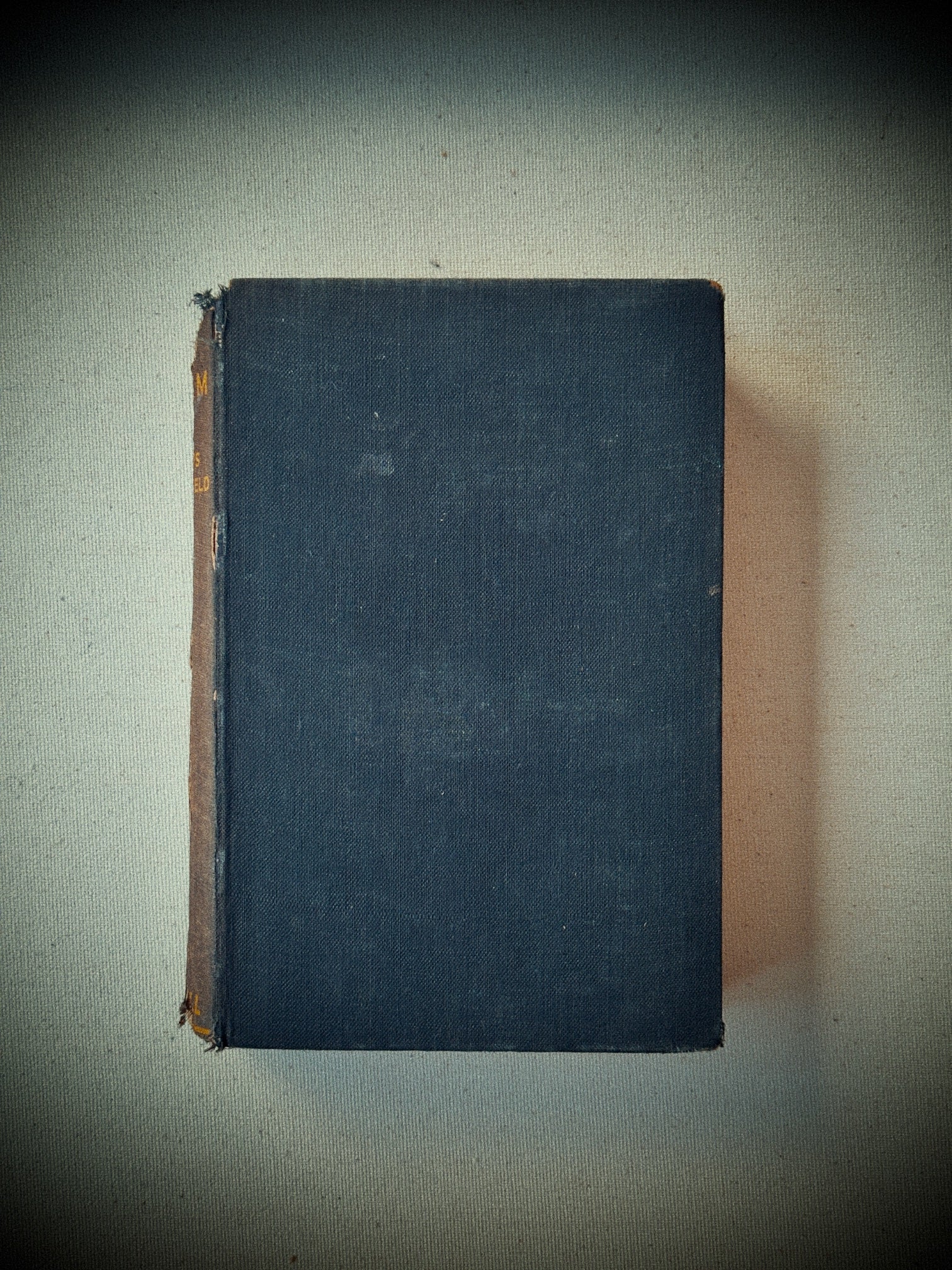
The Farm – Louis Bromfield (London, Cassell and Company Ltd., 1937)
Description
Bound in dark navy cloth with a brown spine, this copy bears the scars of long use and age — the spine is cracked, its gilt lettering partially faded, and the cover edges frayed. Inside, the pages have tanned to a warm sepia, carrying the scent of time. A personal inscription on the flyleaf, dated London 1937, lends this copy an intimate provenance, tying it to its first owner as a gift or keepsake. Despite its wear, the book retains its integrity as a physical object — a relic of transatlantic publishing between England and America.
History & Interest
Louis Bromfield (1896–1956), Pulitzer Prize-winning American author and conservationist, became famous for novels that blended human drama with the rhythms of nature and farming. The Farm (1933, U.S. edition) is one of his seminal works, reflecting on rural life and the values of the soil, themes that prefigured his later activism in sustainable agriculture at his Malabar Farm in Ohio. This particular edition, printed by Cassell in London, shows the international reach of his writings during the interwar years, when readers craved both nostalgic and reformist visions of the countryside.
Age
Printed in London by Cassell and Company Ltd. in 1937 (based on the handwritten date of ownership and the Cassell edition). This book is about 88 years old as of 2025.
Obscure Lore
While Bromfield is remembered for his agricultural reform and influence on the organic farming movement, books like The Farm carried hidden cultural weight: they resonated deeply with readers who felt alienated by industrialization and urban sprawl. Cassell’s decision to issue a British edition illustrates the global appetite for American rural idealism in the 1930s, when England was itself struggling with agricultural decline and food security debates.
Modern Appeal
For collectors, this book offers a rare bridge between literary history and environmental thought. Its personal inscription situates it in 1937 London, a Europe on the brink of war, where such works could provide solace and a vision of rootedness. Today, it speaks not only as a novel but as a historical artifact of the early conservation movement. Its fragility adds charm — a reminder that survival itself is part of its story.
